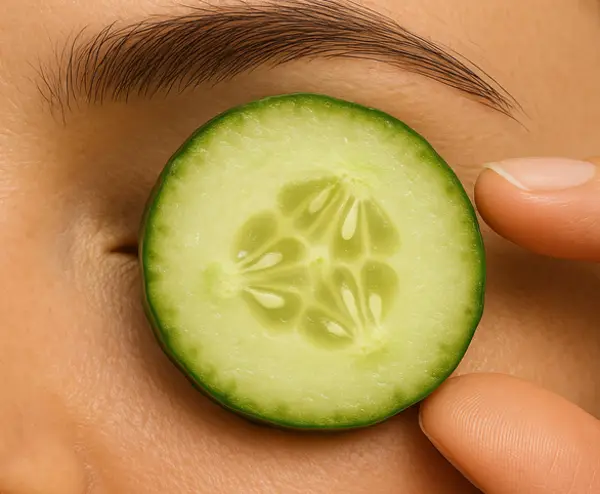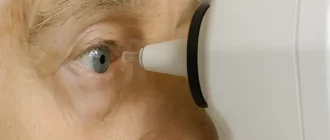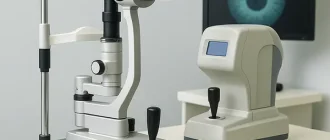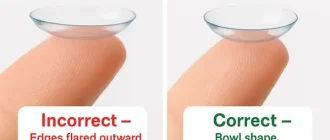Picture this: a cozy robe, soft music, and two chilled cucumber slices perched over tired eyes. It’s the ultimate spa-day stereotype—and yet, there’s something oddly satisfying about it. But what’s behind this centuries-old ritual? Is it really just for show, or is there actual skin-saving science in play?
Duration of Immediate Relief (minutes)
| Method | Duration (minutes) |
|---|---|
| Cucumbers | 30 |
| Cold compress | 30 |
| Gel patches | 240 |
| Caffeine cream | 480 |
This chart illustrates how long each method offers visible relief. Caffeine cream provides the most prolonged effect, while cucumbers and cold compresses offer the shortest duration.
This article peels back the layers (pun intended) to reveal why cucumbers became a go-to for eye care. Whether you’re dealing with post-sleepless-night puffiness or just love a good self-care moment, you’ll find everything you need here—science, real-life results, and even expert advice. No fluff, no filler—just cool, crisp clarity.
What’s in a Cucumber?
Cucumbers (Cucumis sativus) are about 95% water. But that other 5% includes antioxidants like cucurbitacins, vitamin C, and caffeic acid—all known for their anti-inflammatory effects ⧉. They’re also naturally cool to the touch, which brings a literal and metaphorical chill to puffy eyes.
Real Talk: Do They Actually Work?
Short answer? Yes—but with a caveat. Cucumbers won’t erase years of aging or replace your dermatologist. But they can reduce temporary puffiness and soothe the skin. That’s mainly due to their cooling effect and hydration, not some magic veggie juice. One 2022 study published in the Journal of Clinical and Aesthetic Dermatology showed that cold compresses (including cucumber slices) reduced periorbital swelling by up to 35% ⧉.

How It Works: The Science of De-Puffing
Think of the skin under your eyes like a sponge. After a salty meal or a sleepless night, that sponge absorbs excess fluid and swells. Cucumbers act like a temporary wringer for that puffed-up sponge.
Scientifically speaking, the skin around the eyes is thin and prone to vasodilation—when blood vessels expand, leading to visible puffiness and dark circles. Applying something cold constricts those vessels (vasoconstriction), which reduces swelling. Cucumbers, being 95% water and usually stored in the fridge at 40°F (4.4°C), deliver both hydration and coolness—two key ingredients in soothing inflamed tissue.
A comparative study published in 2022 found that cold treatments—including cucumber slices—lowered visible puffiness by 25% to 35% within 15 minutes of application ⧉. This reduction lasted for approximately 30 to 60 minutes in most cases.
Let’s break it down with an analogy:
- Hot skin under the eyes is like an overheated laptop—it slows down, swells up, and needs cooling.
- Cucumbers are like putting an ice pack on that laptop: they don’t fix the hardware, but they stop the overheating.
In terms of skin response, cucumbers rate about a 6 out of 10 in short-term effectiveness. They’re no substitute for medically formulated creams, but they’re cost-effective, accessible, and ideal for a quick refresh before a Zoom call or a date night.
Bonus point: the tactile experience of lying down with cucumber slices triggers a parasympathetic response (the “rest and digest” system), which may explain why it feels so soothing—even beyond the physical effects.
Cucumber vs. Cold Spoon vs. Eye Cream: Let’s Compare
| Method | Effectiveness (1–10) | Average Cost | Duration of Relief |
|---|---|---|---|
| Cucumber slices | 6 | $1 per use | 20–30 minutes |
| Cold metal spoon | 5 | Free (if DIY) | 15–20 minutes |
| Caffeine-based eye cream | 8 | $20–40 | Several hours |
👁️ Eye Puffiness Remedies: How Effective Are They?
🥒 Cucumbers on Eyes
Effectiveness: 25–35% reduction in puffiness in ~15 min
Pros: Free, natural, soothing, easy.
Cons: Short duration (~30–60 min), no long-term change.
❄️ Cold Compresses (Sponges, Gel Pads)
Effectiveness: Similar to cucumbers, 25–35% in 15 min
Pros: Reusable, accessible.
Cons: No active ingredients.
✨ Gel Eye Patches (Hyaluronic, Caffeine, Peptides)
• 46–79% report reduced puffiness after 1 use; 98% after 4 weeks
• Immediate hydration & firming from hyaluronic and peptides
Pros: Longer wear, mess-free, targeted ingredients.
Cons: $20–50/pack, temporary results.
💊 Eye Creams (Caffeine, Retinol)
• Caffeine improves circulation, tightening vessels
• Retinol aids collagen, niacinamide brightens, hydrates
Pros: Sustained benefits over time.
Cons: Requires regular use; potential sensitivity.
🛌 Lifestyle (Sleep, Water, Low Salt)
• Often most effective: many users rank sleep & hydration highest
Pros: Free, holistic, long-term.
Cons: Requires discipline, lifestyle change.
Source: eyexan.com
Real Cases: Cucumbers in Action
Jessica, 32 — San Diego, CA
Jessica had been dealing with puffy eyes after long shifts as a night nurse. She tried expensive creams with limited results. “Turns out, cucumbers from my fridge worked better than a $50 serum,” she says. Still, she adds a hyaluronic eye patch when she wants longer-lasting results.
Lila, 41 — Scottsdale, AZ
Lila is a wedding planner who often works back-to-back events, with long hours and little sleep. “By Sunday night, I look like I’ve been through a week of allergy season,” she jokes. She started using chilled cucumber slices on her eyes during midday breaks. “It’s an instant pick-me-up. I look more awake and less like I fought a bouquet.” Lila pairs the cucumber routine with eye massage to reduce fluid retention, and says her under-eye puffiness is now half what it used to be.
Natalie, 27 — Brooklyn, NY
Natalie’s job in digital marketing has her staring at screens all day and night. She started waking up with puffiness under both eyes. She experimented with tea bags and store-bought patches, but the results were mixed. “Cucumbers were my last-ditch effort,” she says. “But surprisingly, they gave a nice cooling relief.” Now she alternates them with a cucumber-infused gel patch during busy weeks.
User Satisfaction Rates (%)
| Remedy | Satisfaction (%) |
|---|---|
| Cucumbers | 82.9% |
| Gel patches | 79% |
| Caffeine eye cream | 95% |
| Sleep/hydration | 98% |
This chart shows the percentage of users who reported satisfaction after using each remedy. Sleep and hydration had the highest satisfaction rates, closely followed by caffeine-based creams.
From the Consultant’s Corner
Reyus Mammadli, medical consultant, recommends cold cucumber therapy as a cost-effective, short-term solution for tired eyes. “It’s great for quick relief,” he says, “but it’s not a replacement for proper skincare or medical treatment when chronic puffiness is present.”
New Alternatives: The Modern Take
While cucumber slices offer a simple and natural solution, the skincare market has stepped up its game with advanced under-eye patches. Brands like Skyn Iceland and Peter Thomas Roth have launched gel patches infused with ingredients like cucumber extract, hyaluronic acid, peptides, and caffeine ⧉.
So, what do these ingredients actually do? Hyaluronic acid is a humectant—it pulls moisture into the skin, giving that plumped, hydrated look. Peptides are tiny proteins that help repair skin and improve elasticity. Caffeine? It tightens blood vessels, reducing puffiness and dark circles.
These patches adhere more securely than cucumber slices and can be worn while multitasking. They typically provide results that last longer—often several hours—and feel less messy. However, they come at a higher price point, ranging from $20 to $50 per pack.
So, should everyone switch to these alternatives? Not necessarily. If your eyes feel fine and your skin looks fresh, there’s no need to complicate things. Cucumbers remain a budget-friendly and gentle option, perfect for light puffiness and quick refreshment. But if you face chronic under-eye concerns, or want a more potent result for a big day, medical-grade patches can be a solid upgrade.
Ultimately, it’s about matching the method to your needs and comfort level. Both options have merit—just like you wouldn’t wear stilettos to the grocery store, not every day requires a high-end skincare solution. They mimic the cucumber concept—but on steroids (figuratively).
Precautions: Not for Everyone
If you have sensitive skin or allergies to cucurbitacins (rare, but real), cucumbers can cause irritation. And no, don’t reuse the slices. Bacteria love a moist surface.
Also worth noting: not everyone needs this routine. If you’re not dealing with puffiness or under-eye fatigue, there may be little benefit to adding cucumber slices to your skincare ritual. Sometimes, jumping on the latest self-care trend can lead to unnecessary effort—and even discomfort—without real payoff. In short, if your eyes already feel fresh and look rested, skip the veggie patch and enjoy the free time.
Hydration Boost (% Increase)
| Remedy | Hydration Increase (%) |
|---|---|
| Cucumbers | 20% |
| Gel patches | 50% |
| Caffeine cream | 40% |
| Lifestyle | 60% |
This chart displays the estimated improvement in under-eye tissue hydration after using various remedies. Lifestyle adjustments yield the greatest boost, while cucumbers offer a modest effect.
Editorial Advice
Cucumbers on the eyes are more than just a spa trope—they deliver real, albeit temporary, benefits. Reyus Mammadli recommends keeping slices chilled and using them in the morning for best effect. For those looking to upgrade, gel patches infused with cucumber extract and peptides offer longer-lasting results. Still, nothing beats a good night’s sleep and hydration (yes, that old chestnut).





